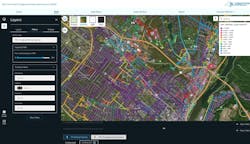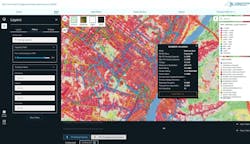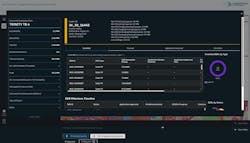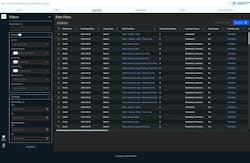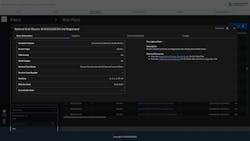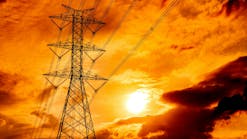IEDR: The Data Innovation Powering New York’s Energy Transition
When New York State signed the Climate Leadership and Community Protection Act (CLCPA) into law on July 18, 2019, it set in motion one of the most ambitious and aggressive climate and clean energy initiatives in the U.S. to put New York on a path to achieve a zero-emission electricity sector by 2040 and reach economy-wide carbon neutrality.
A lesser-known act, one designed to facilitate the energy transition envisioned by the CLCPA, followed in February 2021. But it didn’t focus on renewable technologies or emission-reduction targets. Instead, it elevated the role of data – namely shared data – in meeting the state’s strategic sustainability goals.
With its Order Implementing an Integrated Energy Data Resource (the “IEDR”), the New York Public Service Commission (NYPSC) triggered development of a unique clean energy tool: a massive, shared data resource with energy-related data from each of the state’s energy utilities and several other public and private sources.
Its purpose? In the words of the NYPSC Order, to “unleash the power of integrated energy customer data and energy system data to speed the development of clean energy solutions.”
Now all New York had to do was design and build it.
Building a Foundation
That responsibility would fall upon the New York State Energy Research & Development Authority (NYSERDA), whom the NYSPC appointed as the IEDR’s Program Sponsor. NYSERDA partnered with program manager Deloitte and utility data advisor Pecan Street before announcing in October 2022 its selection of E Source as Solution Architect and Development Team Leader.
“We recognized from the outset that developing the IEDR would be groundbreaking, not only in the scope of the data it would aggregate and securely hold and share, but also the opportunities it would unlock,” said Kyle Monsees, Project Manager, NYSERDA. “At its heart, the IEDR is about the democratization of data, using shared data to level the playing field for all stakeholders to accelerate innovation and spread the benefits of clean energy fairly among residents, communities (including historically disadvantaged communities), businesses, distributed energy resource providers, state agencies, and utilities.”
To best understand the intent of the IEDR, it’s helpful to consider New York’s energy and climate goals. Reaching a zero-emission electricity sector, for example, needs unprecedented cooperation at scale. Shared energy data is critical – helping all stakeholders understand their opportunities in New York’s energy transition and know how best to participate in them.
Effective access to useful energy data will play a critical role in this transformation to inform investment decisions, identify operational inefficiencies, monitor the effectiveness of policy objectives, promote innovation, and encourage new business models.
New York believed this information could rest in a shared data resource – the IEDR.
Data, Data Everywhere
The IEDR is doing something never done before: making a wide swath of utility data, from every electric, natural gas, and steam utility operating in the state, available in a centralized, shared platform. For E Source and its Development Team partners (UtilityAPI, Flux Tailor, and TRC Companies) that meant ‘normalizing’ a massive amount of rate plan, distribution circuit, and hosting capacity data from eight different utilities into one common format – and keeping that data current.
Yet utility data is just one facet of the IEDR. Other datasets include environmental, community, and property data for every parcel of land in the state, and, soon, utility-customer data, which customers can choose to share with trusted third-parties on an opt-in basis). Again, gathering all this data and making it available to IEDR users in a common, easily consumable way, is only part of the story; integrating it into useful datasets is another.
Making Data Useful
To date, the fruits of this labor are most evident in two of the IEDR’s feature tools, debuted upon completion of the platform’s first phase, a milestone reached in March 2024:
Electric Infrastructure Assessment Tool: This application enables exploration of detailed, energy-related datasets across New York state. The tool’s interactive map provides access to environmental, community, and property data with a goal of helping users find feasible sites for solar, battery, energy storage, and EV charging station development.
Rate Plan Browser: This central repository of structured, machine-readable data is used for rate plan modeling. It streamlines access to and use of electric, gas, and steam rate plan data. This tool was built to simplify and accelerate the job of using rate plan data to evaluate energy, cost, and carbon savings of a specific project and to make rate plan comparisons across utilities.
So, who are these tools for, and how are they being used? One early use case gaining traction helps developers site new renewable energy projects.
Demand for a better way to identify appropriate parcels of land for renewable project development is high among distributed energy resource providers of all sizes, from solar and wind developers to those offering energy storage and fuel cell solutions.
That’s because the process for finding land suitable for new renewable energy projects can be extremely inefficient and frustrating. Many questions must be answered in pursuit of the perfect plot:
- Where are there available parcels of land for project development, and how large are the plots
- Where is the hosting capacity on the grid?
- What is the distance of a given plot from the nearest interconnection point?
- Could a distributed energy resource in that location be used to service a disadvantaged community?
- Which utility serves each specific plot of land?
- What are that utility’s rates in that service territory, including time-of-use rates?
- Is the property in question “brownfield” or “greenfield,” and are there other environmental restrictions that go with it?
- Are there other DER projects in the area, or are any planned?
The list is lengthy, with several permutations. Fortunately, the IEDR is up to the challenge. And that’s critical to getting more projects online faster, because not having easy access to this information has proven costly. How many renewable project developers have found either a great prospective customer or site upon which to deploy distributed energy resources only to find out weeks or months into their work that there is no grid capacity there, and none available for the foreseeable future?
With the IEDR, project developers can get the siting and hosting capacity information they need upfront, in just minutes, by applying different filters (available as simple dropdowns) to the data in the Electric Infrastructure Assessment Tool. Then they can take the extra step of comparing utility rates with the Rate Plan Browser to firm up their planning calculus.
Not only is this a better, more efficient way for developers to do their research – utility rate plan data of this kind used to reside solely in lengthy PDFs (think hundreds of pages) that could only be searched manually. The IEDR’s machine readable formats are a godsend, as is the platform’s cost – which is free to all users.
Many of New York’s top clean energy associations are taking notice.
A Collaborative Approach
Deb Peck Kelleher, Deputy Director of the Alliance for Clean Energy New York (ACE NY), a member-based advocacy group for the rapid adoption of renewable energy and energy efficiency technologies, said, “Our members at ACE NY represent the gamut of clean energy solutions, from wind, solar, hydrogen, fuel cells, and battery storage to energy efficiency and transportation electrification. And they are all excited about the prospects of the IEDR to make utility, customer, capacity, siting, and other data more available and actionable to streamline the sales process and expedite project development.”
Added Dhruv Patel, Policy Manager at New York Solar Energy Industries Association (NYSEIA), an advocate for sustainable solar energy growth across the state, “The IEDR is quickly improving and is on a path to becoming a go-to tool for many solar developers. The IEDR comes at no cost to the user, which is a big advantage for small providers who otherwise would have to spend considerable time and resources to get the same information. And, as someone steeped in the interconnection process, I’m a big fan of how the IEDR presents each of the state’s electric utility’s data in a uniform, apples to apples way, on a single map with overlapping layers for environmental and land information. It saves time, facilitates informed decision making, and will only get better with time.”
What Peck Kelleher and Patel also value is the way the IEDR is being developed – with lots of input from the stakeholder community.
“NYSERDA and its development team didn’t take an ‘if we build it, they will come’ approach to the IEDR,” said Peck Kelleher. “Instead, they have been very collaborative and proactive with the renewable energy and energy efficiency community here in the state, soliciting our input, asking our members what data, features, and functionality would be most helpful to them, and allowing us to test the IEDR and suggest enhancements. Yes, democratizing data is at the core of the offering, but the way the IEDR is being developed is also of and for the people.”
What’s Next?
With Phase 1 complete, NYSERDA, E Source and team are busy on Phase 2, which will bring more than 40 additional use cases to life, from full-blown ‘Green Button Connect’ functionality that will simplify how utility customers share their energy data with renewable energy and efficiency vendors that would like to serve them, to EV charger siting and load growth planning, to utility program prioritization for disadvantaged communities, and beyond.
And while each new use case aims to simplify a process or challenge for a specific stakeholder or set of stakeholders – enabling a utility to optimally site a charging station, for example –moving New York closer to its renewable energy goals, the network effect of the IEDR may prove to be the platform’s biggest accomplishment.
“Before the IEDR, siloed data separated energy utilities from renewable project developers and the people and communities they both serve, slowing clean energy development and adoption,” said Adam Stotz, CTO of E Source. “This shared data resource is reminding all parties of their connectedness and the collaboration needed to meet challenges of this magnitude.”

